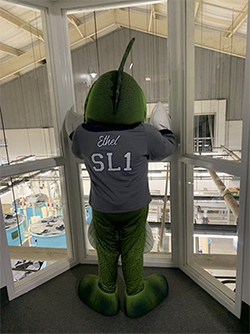Hatchery
The estimated 3.1 million freshwater anglers who fish Texas lakes and rivers each year spend $11.1 billion on fishing and support an estimated 51,380 Texas jobs. Texans spend more money on fishing than on any other outdoor activity. Fish stockings along with harvest regulations and habitat enhancement have been the primary techniques used by Texas Parks and Wildlife Department biologists to improve or maintain fishing quality.

Hatcheries play a vital role in maintaining the quality of fishing in Texas. Fishing pressure on Texas' fresh waters is tremendous. Stocking of hatchery-reared fingerlings helps supplement wild populations to enhance the quality of Texas fisheries. Texas Parks and Wildlife Department annually produces more than 7.5 million bass, 1.2 million catfish, 5.8 million striped bass and hybrid striped bass, and 1 million other species of fish for stocking into Texas reservoirs.
The Texas Freshwater Fisheries Center houses one of five state fish hatcheries. Largemouth bass production is the primary focus of the hatchery, although other fish are also grown here. The hatchery produces 3 to 4 million Florida largemouth bass fingerlings annually.

The TFFC hatchery production takes place in both indoor and outdoor production systems. Indoor facilities include raceways for spawning, holding and treating fish, isolation and treatment tanks and fish health and water quality laboratories. Fish are grown to the desired size in 45 lined outdoor ponds ranging from one-third to two acres totaling 37 surface acres. The outdoor hatchery is also tasked with the production of food for bass. In excess of 6,000 kilograms koi carp are necessary to feed adult bass at TFFC. Catfish are fed a prepared floating feed.
The Lunker Bunker is a special part of the indoor hatchery. Visible through a bay window at the end of the hatchery gallery in the Visitor Center are 22 circular tanks, used to hold largemouth bass entered into the ShareLunker Program. These tanks can also be used as quarantine or treatment areas for new or sick fish. The Lunker Bunker is comparable to an Intensive Care Unit for Largemouth bass, because of the focus on fish health and recovery.
In the hatchery building beyond the Lunker Bunker are raceways, 15,360-gallon troughs used for spawning Florida largemouth bass as well as rearing channel catfish and holding rainbow trout for stocking. Every aspect of fish production can take place here, from spawning to egg incubation to grow-out. During the spring, male and female largemouth bass pairs are placed in raceways and given mats resembling artificial turf on which they spawn. The egg-covered mats are then removed and placed in holding troughs for hatching. After the young fish (aka fry) hatch, they are held in hatchery building raceways until they are big enough to be placed in outside ponds for further growth. Or they may be stocked into public waters as a part of the Inland Fisheries management program.
The fish health and water quality laboratories support the work of the hatchery and the exhibits. In the fish health lab, problems and diseases are diagnosed. Water quality is also monitored to ensure that the fish are kept in a healthy environment.
Water for the TFFC hatchery and exhibits is pumped from Lake Athens, filtered and treated with ozone. After borrowing, the water is returned to the lake. Maintenance of the massive filters and intricate plumbing is a major job for TFFC maintenance and hatchery personnel.
For information on the overall TPWD hatchery program, click here.